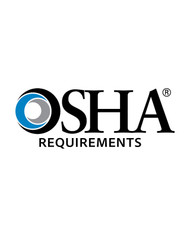OSHA Restroom Requirements for the Workplace
Providing safe, sanitary, and accessible restroom facilities is a legal requirement under federal workplace bathroom laws. The Occupational Safety and Health Administration (OSHA), under the U.S. Department of Labor, establishes mandatory standards to ensure employees have prompt and reasonable access to restroom facilities without extended delays. Understanding and implementing OSHA restroom requirements is essential for business owners, facility managers, and HR professionals to remain compliant and safeguard employee health.
OSHA Rules on Bathrooms and Access
Under OSHA restroom rules, employers must provide an adequate number of toilet facilities for the workforce. Access must be prompt, and policies must not create unnecessary barriers. The Safety and Health Administration makes it clear that requiring employees to sign out a key or follow other procedures cannot cause significant delays in restroom use.
Restrictions must also account for medical conditions such as bladder disorders, pregnancy, and other health concerns. These conditions, including those covered by the Americans with Disabilities Act (ADA), may require more frequent or extended restroom breaks as a reasonable accommodation.
OSHA requires that restrooms be located within reasonable proximity to the work area so employees can use them without extended travel time. For mobile or construction sites, employers must provide compliant portable toilets or transportation to a public restroom. These facilities must meet the same sanitation and accessibility standards as permanent restrooms.
OSHA Restroom Requirements per Employee
The required number of toilets is determined by the size of the workforce:
- 1 toilet seat for 1–15 employees.
- 2 toilet seats for 16–35 employees.
- 3 toilet seats for 36–55 employees.
- 4 toilet seats for 56–80 employees.
- 5 toilet seats for 81–110 employees.
- 6 toilet seats for 111–150 employees.
- 1 additional toilet for every 40 employees over 150.
In male restrooms, urinals may replace up to one-third of the required toilets. For example, facilities serving 50 male employees could meet requirements with a seat and 1 urinal per 50 workers, provided OSHA's minimum toilet ratio is maintained.
Special Considerations for ADA Compliance
All workplace bathrooms must be ADA-compliant when serving employees or the public. This means at least one stall must meet Disabilities Act ADA standards, including grab bars, wider entry space, and fixtures at accessible heights. If restrooms are gender-specific, each must have at least one compliant stall. In workplaces with fewer than 15 employees, a single unisex bathroom that is ADA-compliant is permitted.
Restroom Requirements for Business and Maintenance Standards
Restroom requirements for business operations extend beyond the number of toilets. Employers must ensure facilities are:
- Maintained in a sanitary condition.
- Equipped with running water, soap, and either paper towels or air dryers.
- Ventilated to control odor and promote cleanliness.
- Free of stored food or beverages, in accordance with health administration OSHA standards.
OSHA prohibits consuming or storing food in restrooms to prevent contamination and maintain sanitary conditions.
Portable Toilets and Remote Worksites
For construction sites and other remote worksites, OSHA permits portable toilets if permanent facilities are not feasible. These must meet the same sanitation, privacy, and maintenance standards as fixed restrooms. In agriculture, toilets and handwashing stations must be within a quarter-mile of the worksite.
Consequences of Non-Compliance
Failure to comply with OSHA restroom requirements can result in citations, financial penalties, and reputational damage. Inadequate facilities or restricted access can cause health problems, including urinary tract infections, dehydration, and other medical issues. If the provision of toilets is insufficient, employees may be forced to limit fluid intake or endure unsafe working conditions, which violates occupational safety and health obligations.
Key Takeaways for Employers
- Determine restroom requirements using OSHA's per-employee ratio.
- Provide prompt access without unreasonable restrictions.
- Ensure all facilities are ADA-compliant and accessible to employees with disabilities.
- Maintain sanitary, well-equipped restrooms at all times.
- Provide compliant portable toilets for mobile or remote worksites.
By following OSHA rules on bathrooms and maintaining compliance, employers protect worker health, reduce liability risks, and uphold federal workplace standards.
Support Compliance with Trusted Fixtures from Berl's
Meeting OSHA and ADA restroom requirements isn't just about avoiding fines; it's about protecting your team and creating a safe, functional workplace. Berl's Commercial Supply offers a full range of commercial restroom fixtures, including ADA-compliant grab bars, dispensers, and hands-free accessories designed for code-compliant installation. Whether you're outfitting a new build or upgrading existing facilities, our team can help you source reliable, regulation-ready solutions that hold up to daily use.


